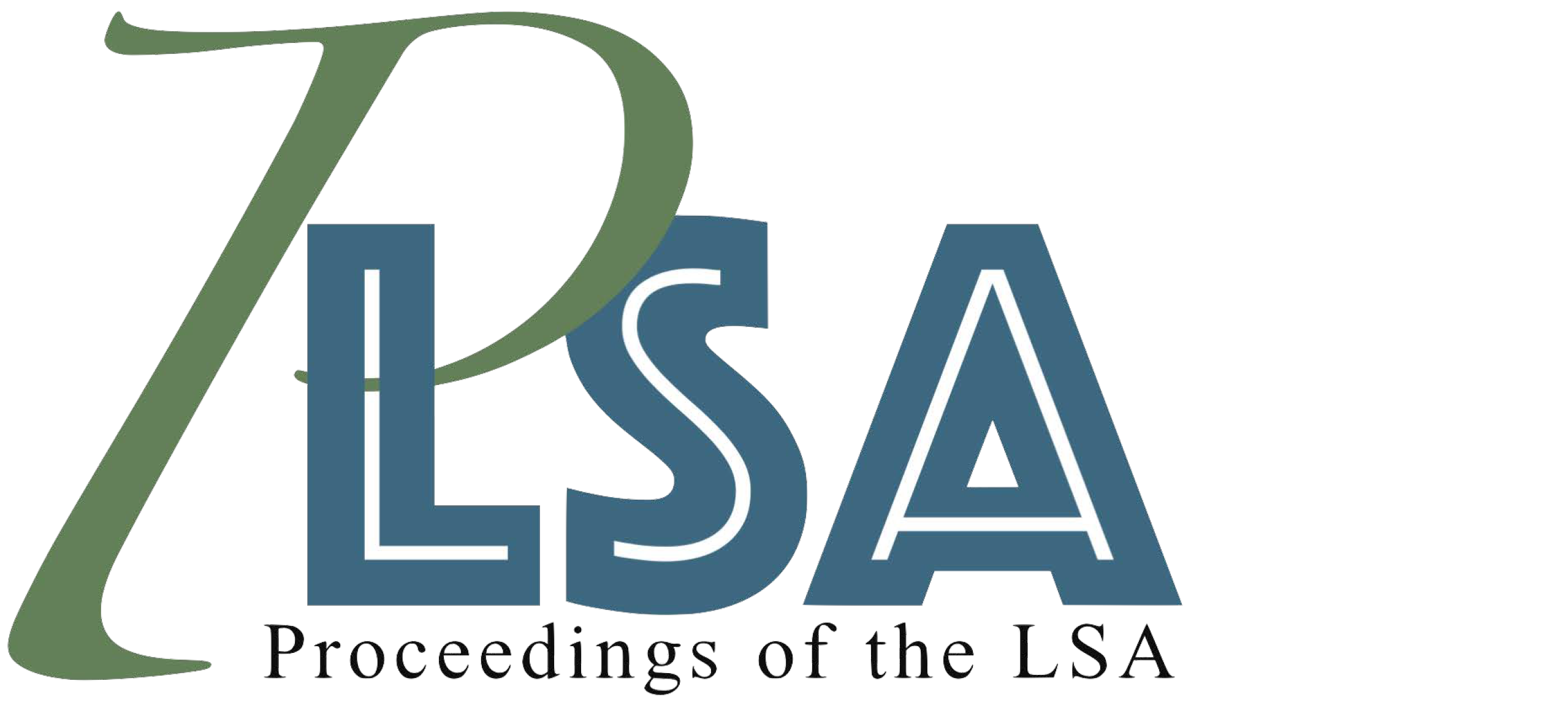Bilingual knowledge of wh-in situ and island violations
DOI:
https://doi.org/10.3765/plsa.v9i1.5728Keywords:
wh-in-situ, Egyptian Arabic, English, experimental syntaxAbstract
Research on bilingual sentence processing has argued that structures which fully overlap in surface word order across two languages do not distinctly belong to either one of a bilingual’s languages but are instead shared across both. However, it is unclear to what extent the derivational properties of these structures play a role in this sharedness. In this paper we investigate bilinguals’ sensitivity to two structures that ultimately result in overlapping word orders across their two languages but are argued to be licensed under different pragmatic contexts. We focus on wh-in situ structures in Egyptian Arabic, a language where wh-in situ serves as a canonical wh-question formation structure in out-of-the-blue questions and English, where (single) wh-in situ structures have been argued to be pragmatically licensed in contexts where common ground requirements are fulfilled. Using data from Egyptian Arabic and English wh-structures, we show that even in situations where the wh-in situ structures are presented without pragmatic licensing, bilinguals accept them as out-of-the-blue interrogatives. Taken together, these results suggest that wh-in situ is a common structure across Egyptian Arabic and English for this population of bilinguals, despite its restricted pragmatic conditions in English.
Downloads
Published
Issue
Section
License
Copyright (c) 2024 Yourdanis Sedarous, Acrisio Pires

This work is licensed under a Creative Commons Attribution 4.0 International License.
Published by the LSA with permission of the author(s) under a CC BY 4.0 license.
